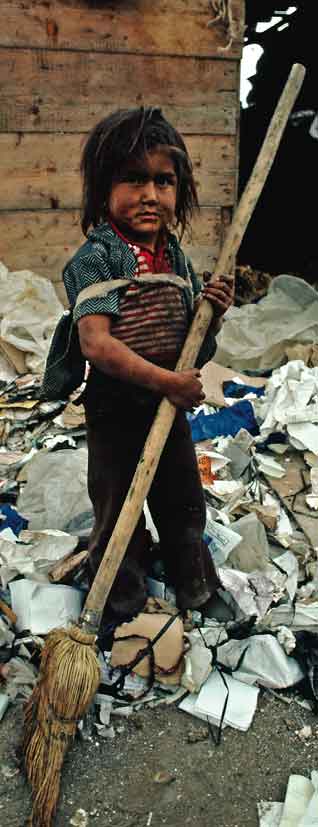Current Events
Beating Poverty in India ...
With Creative Accounting
AMRIT KAUR DHILLON
Glance in any direction you care to look and it’s painfully obvious that immense and degrading poverty is still the norm for millions of Indians.
Poverty forces them to live like rats in sewers, to eat horrible food, to cope without running water, to suffer the horror of defecating in the open, to endure a squalor that haunts them from birth to death.
But India’s government was patting itself on the back recently, delighted, after a tidal wave of corruption scandals, to have some good news to announce: The number of India’s poor had shrunk dramatically.
The proportion of the population below the poverty line fell from 37.2 per cent in 2005 to 21.9 per cent in 2012, according to the latest government statistics. In seven years, the number plunged from 407 million to 259 million, a decline of 148 million.
It was all the more striking for being much sharper than a previously recorded drop, from 45.3 to 37.2 per cent between 1994 and 2005.
Spokesmen grinned from ear to ear in televised studio debates, relieved to be able to boast about an achievement instead of having to defend yet another venal minister.
But the euphoria was ruined by two things: Some hardhearted remarks about the cost of food that betrayed politicians’ contempt for the poor, and the realization that India’s definition of poverty is scandalously low.
First the Marie Antoinette remarks.
At a briefing with news reporters, Indian parliamentarian Raj Babbar insisted that common folk could buy a meal in Mumbai for 12 rupees – about 20 cents. Not to be outdone, his colleague Rasheed Masood said five rupees would suffice in New Delhi.
Both men appear not to realize that the poor cannot afford milk, eggs or any but the cheapest of vegetables. Forget meat, fish or fruit – with the rampant food-price inflation India has been seeing for more than a year, they cannot afford onions at 20 rupees a kilo or even a tomato at 70 rupees to give a bit of flavour to a watery potato pottage. To be clear, for 12 rupees, you cannot buy a plate of rice and lentils in either city.
This leads us to India’s official definition of poverty, which is based on the individual’s spending – only someone who spends less than 27 rupees a day in rural areas and 33 rupees a day in urban areas is counted as living in poverty.
These figures are mind-boggling. For 33 rupees, you can buy a few bananas and onions. On top of food, the average poor Indian still needs to pay for rent, clothes, medical expenses, school textbooks, transportation, electricity and cooking gas.
This definition seems to have been conjured up and calibrated by a misanthrope to ensure that it only just stops short of causing organ failure. It can hardly be called “living.”
In other words, the number of poor has fallen – but only because the definition of poverty is so disgracefully low. A government committee is currently studying the matter to see whether it needs revision.
“I look through the rubbish thrown out from rich homes to find some mango peel so that my child can know what a mango tastes like,” I was once told by a slum dweller who had never been able to buy the national fruit.
If she heard that she had been lifted out of poverty by the government because she earns just over 5,000 rupees a month – $81 – she would probably only laugh.
[Amrit Kaur Dhillon is a freelance journalist based in New Delhi.]
Courtesy: The Globe and Mail.
September 14, 2013
Conversation about this article
1: Devinder Pal Singh (Delhi, India), September 16, 2013, 1:16 AM.
This is out of the world; poverty is vanishing only for the privileged. The VVIP will get subsidized facilities, (canteen, travel, etc.), help in retaining money in his pocket without the need to disturb his bank balance. For the commoner, rental in the cities is high, add to it the daily travel expenses which would not be less than Rs. 50; food is, as the writer has stated, a luxury. So the government is quite correct that the commoner is rid of poverty. I am amused at the so-called think-tanks in the Indian Government and its Planning Commission. Think of it, when you have to pay for medicine for the family, education, etc., you have nothing to spare to meet these basics. Poverty does not get reduced, it is being enhanced and is stressing on the lives of both urban and rural population. If Rs. 33 is the demarcator, then let the government adjust its payrolls and salary disbursements: after all, Rs 36 spent a day will bring you into the middle class with all your future concerns thrown to the heavens.



